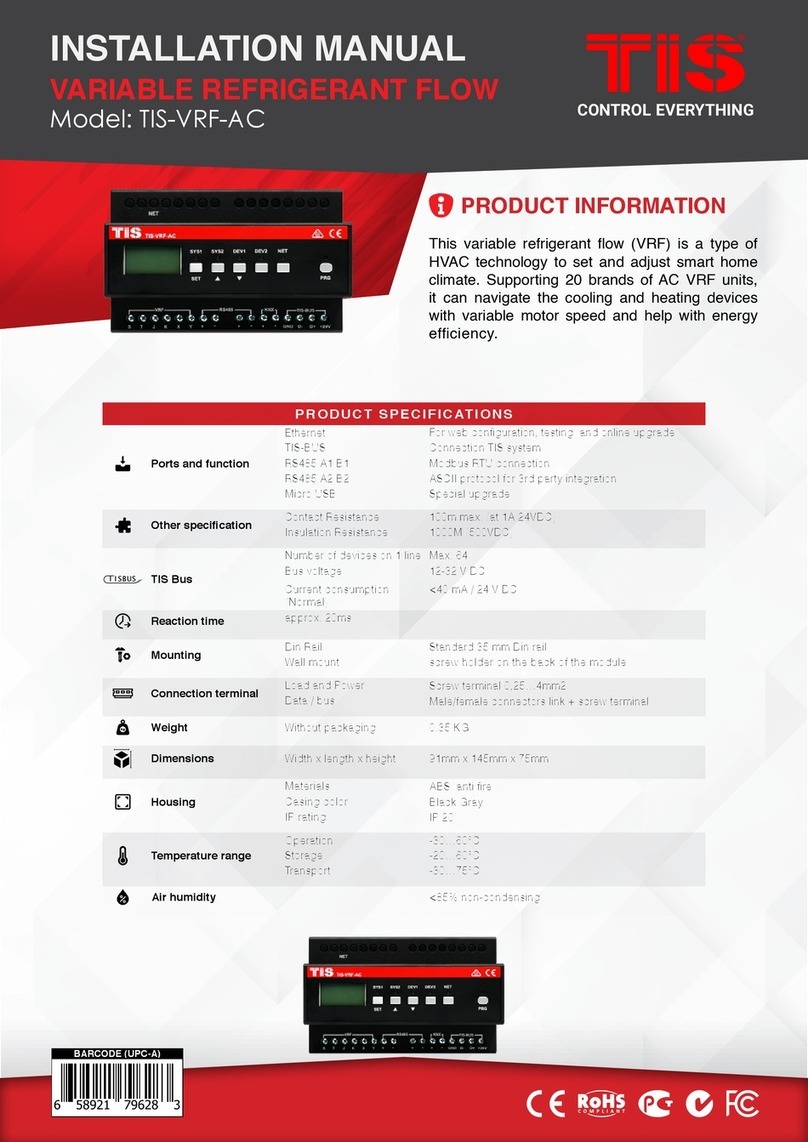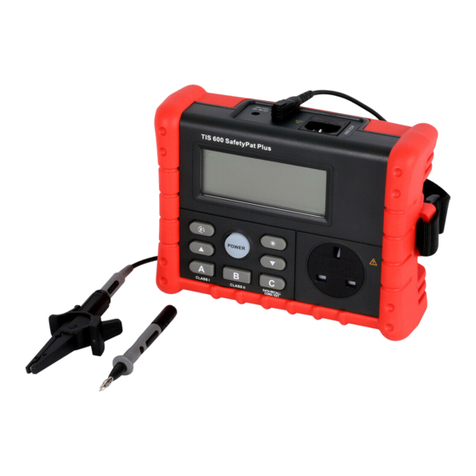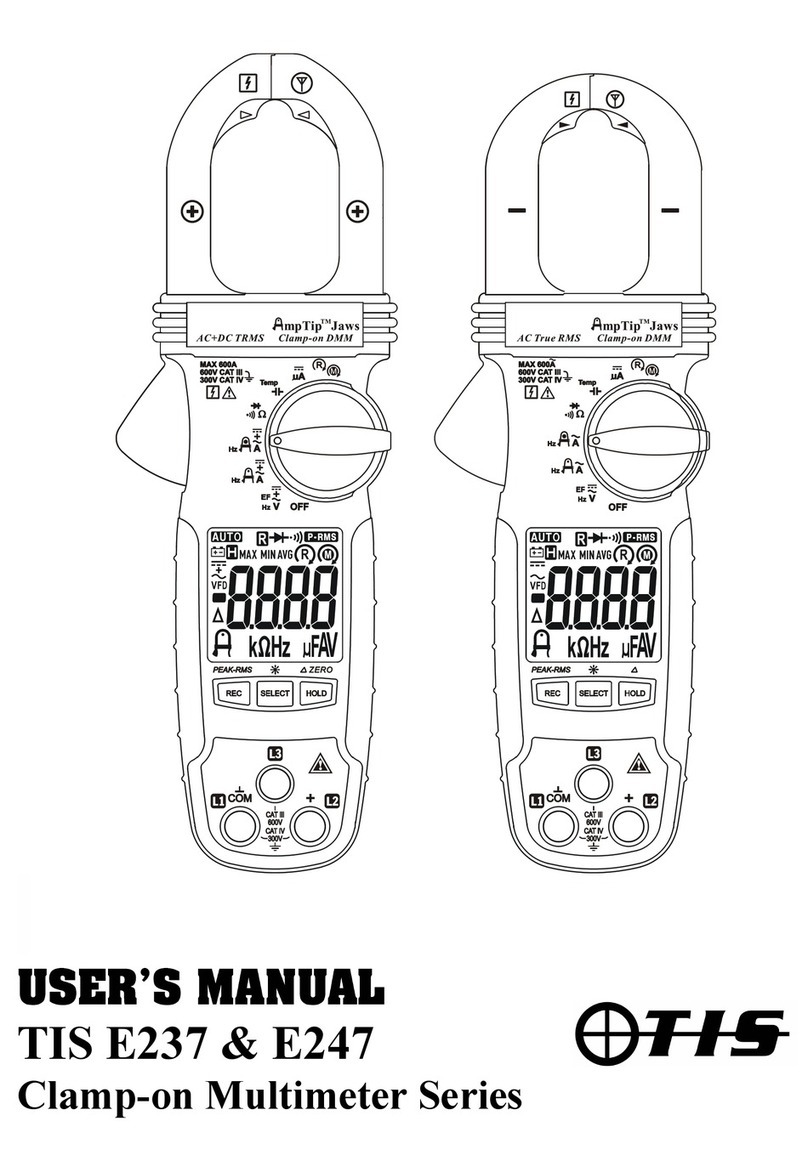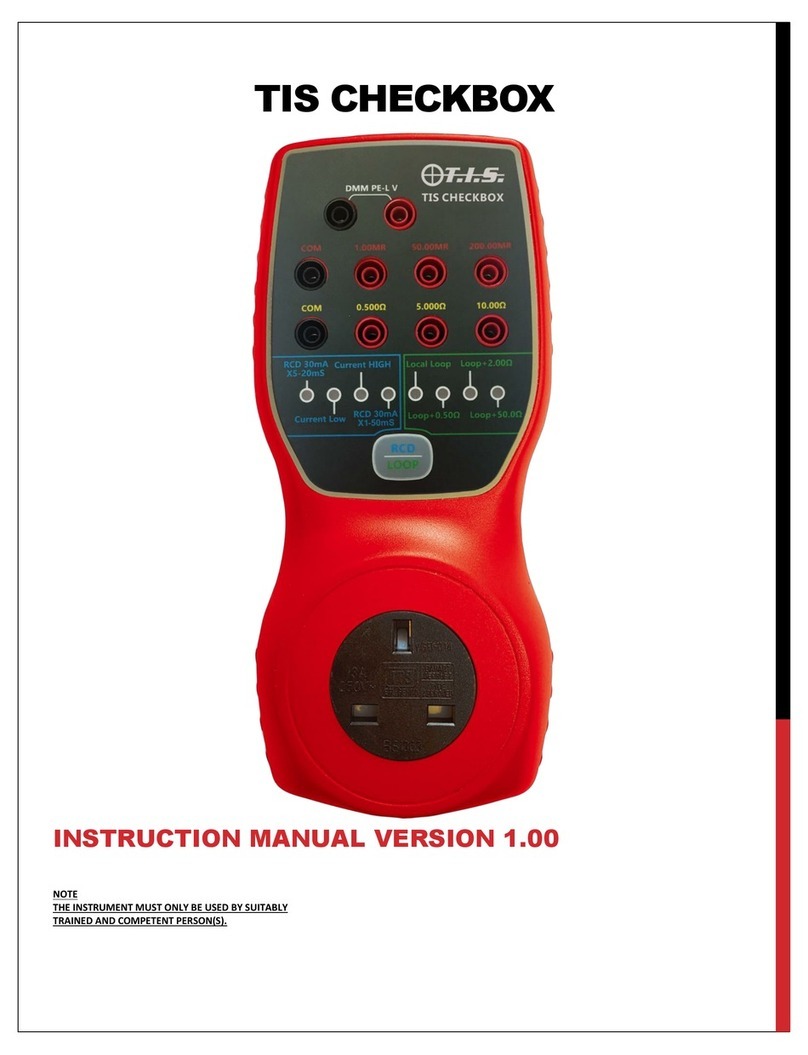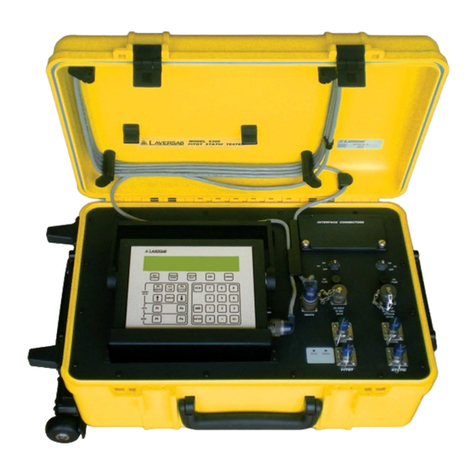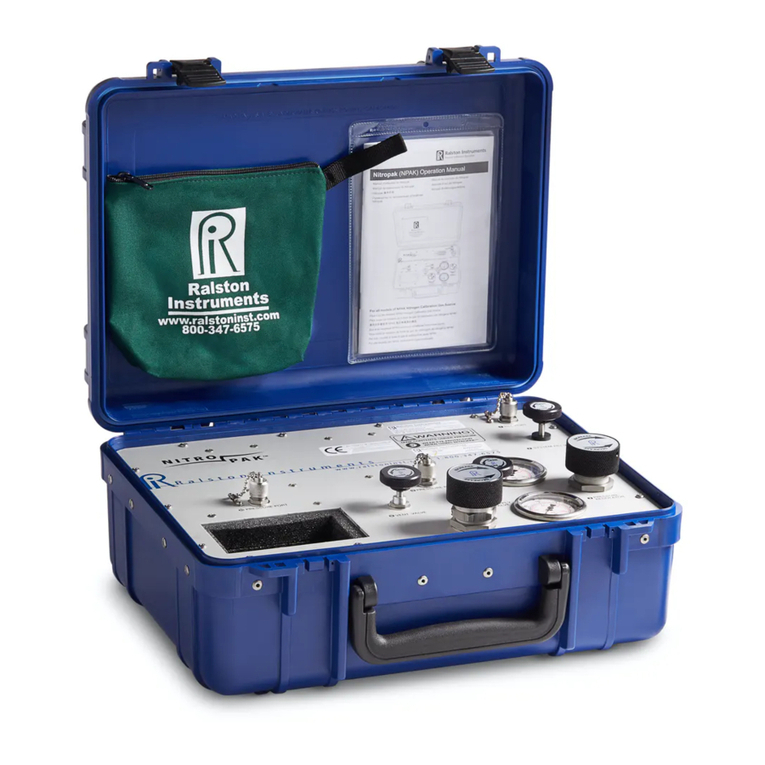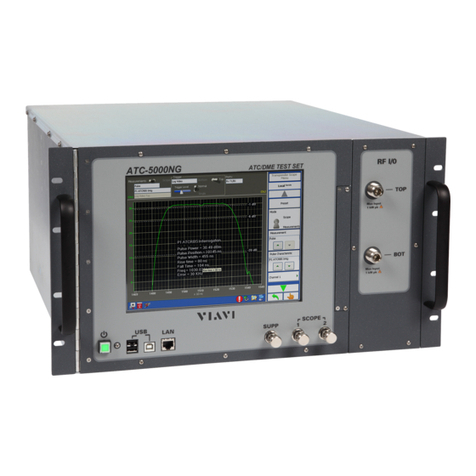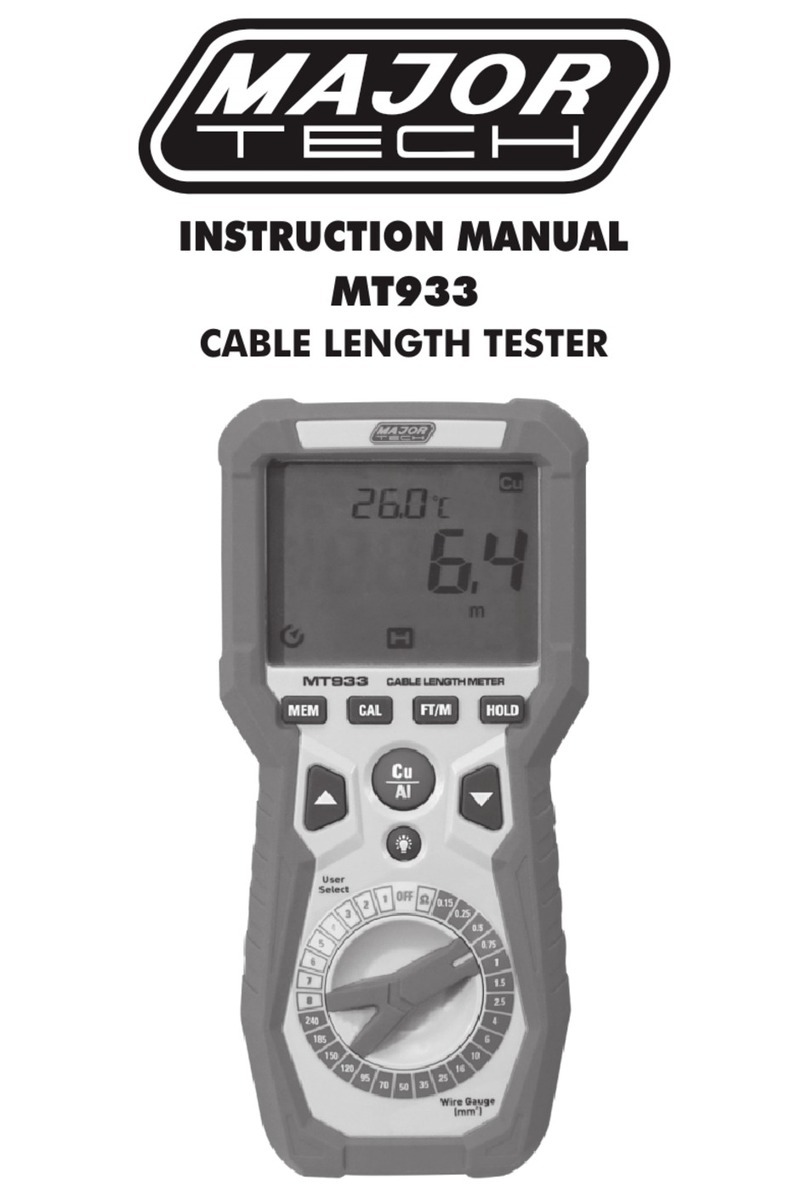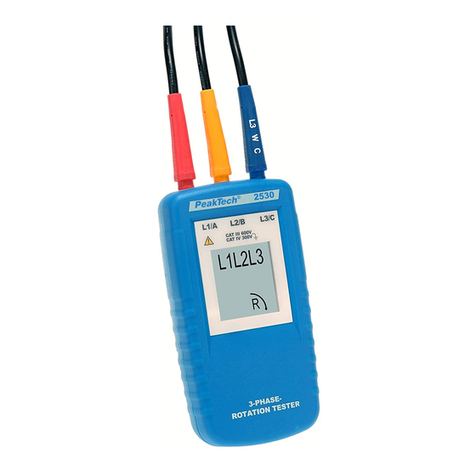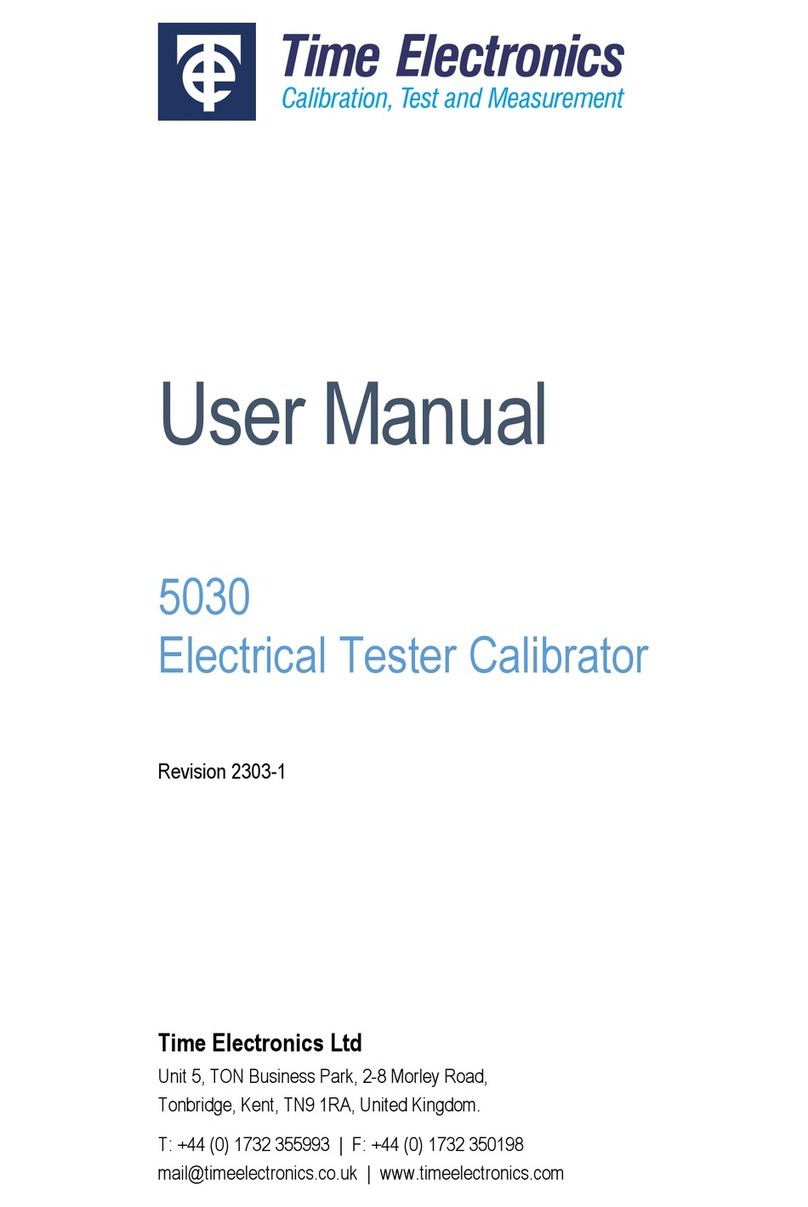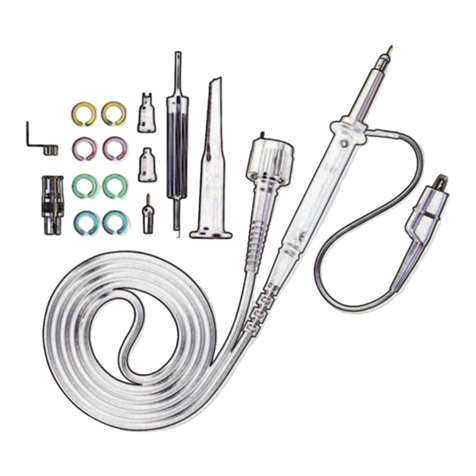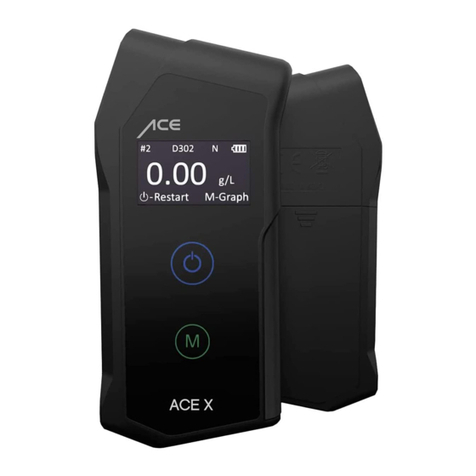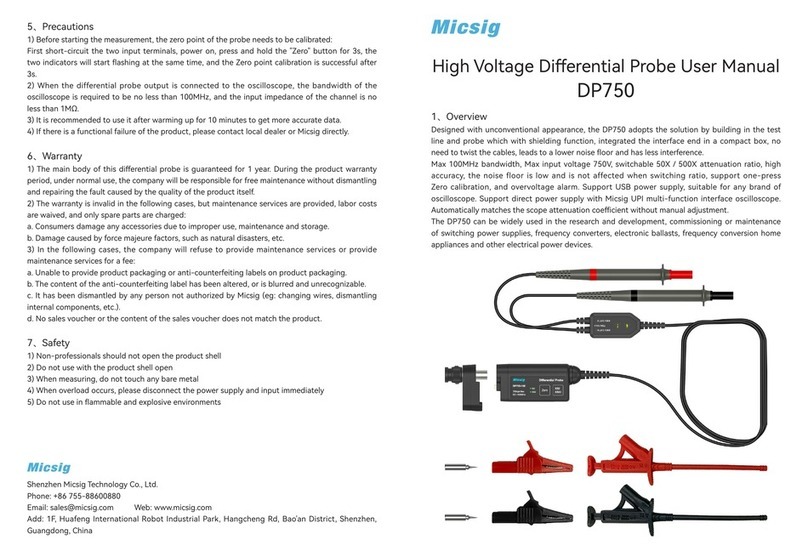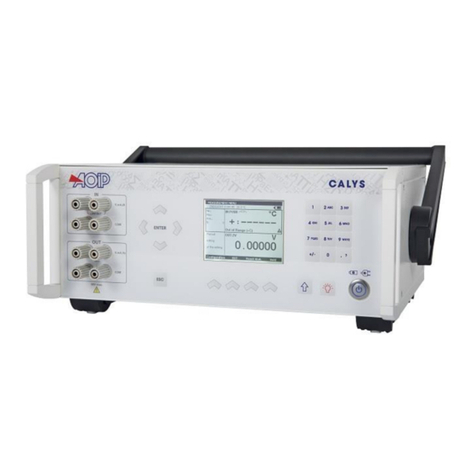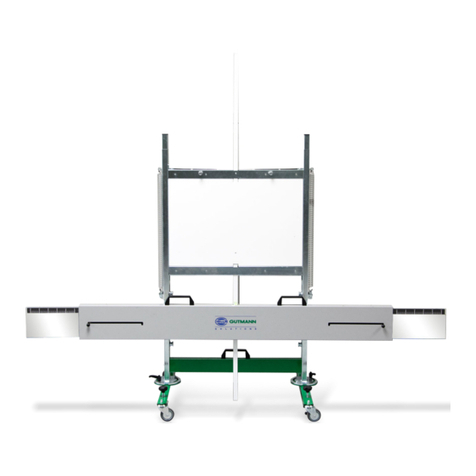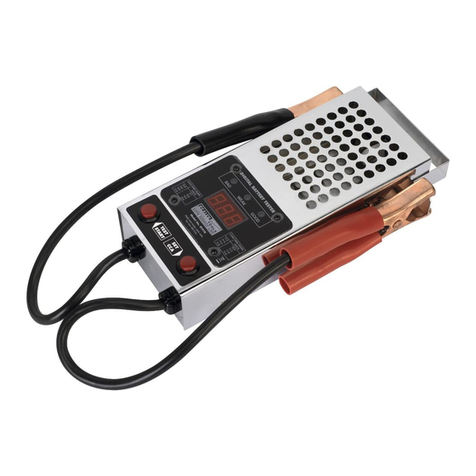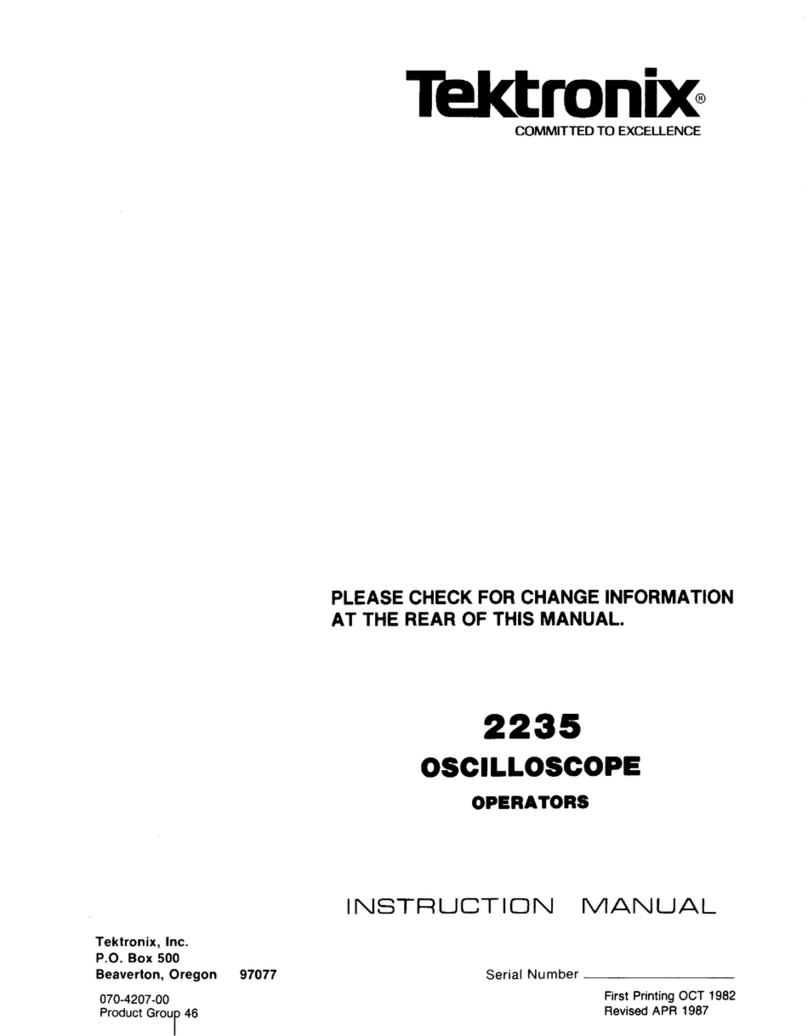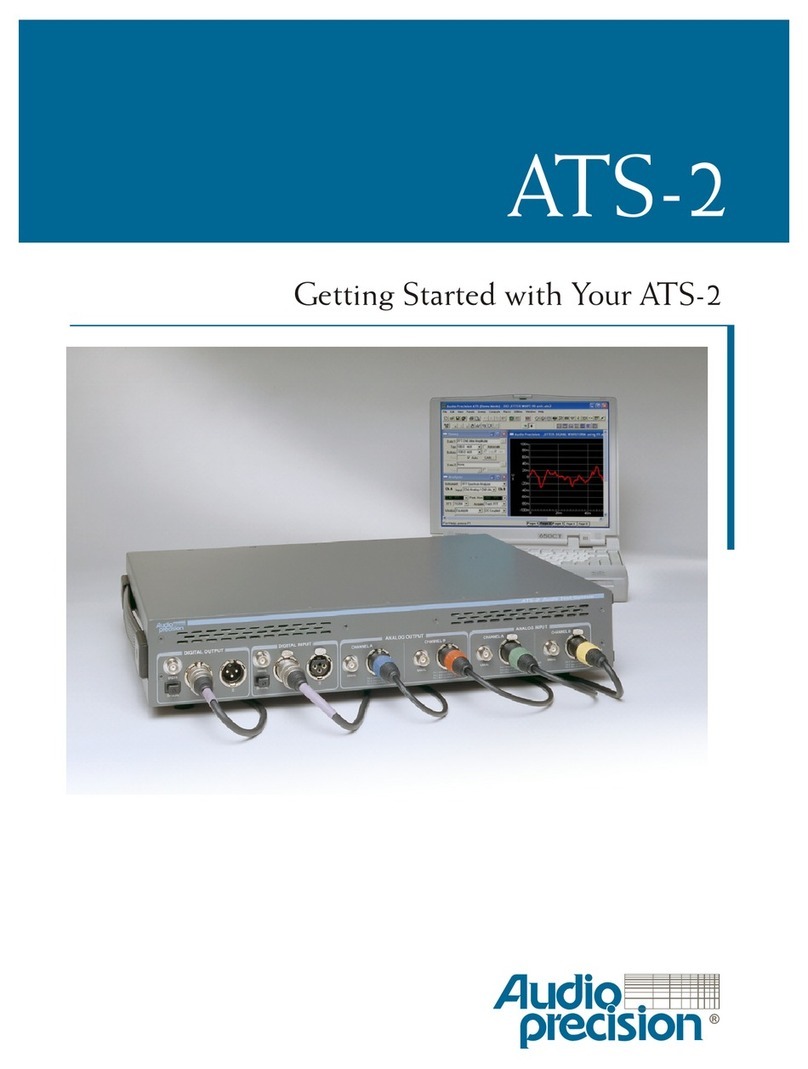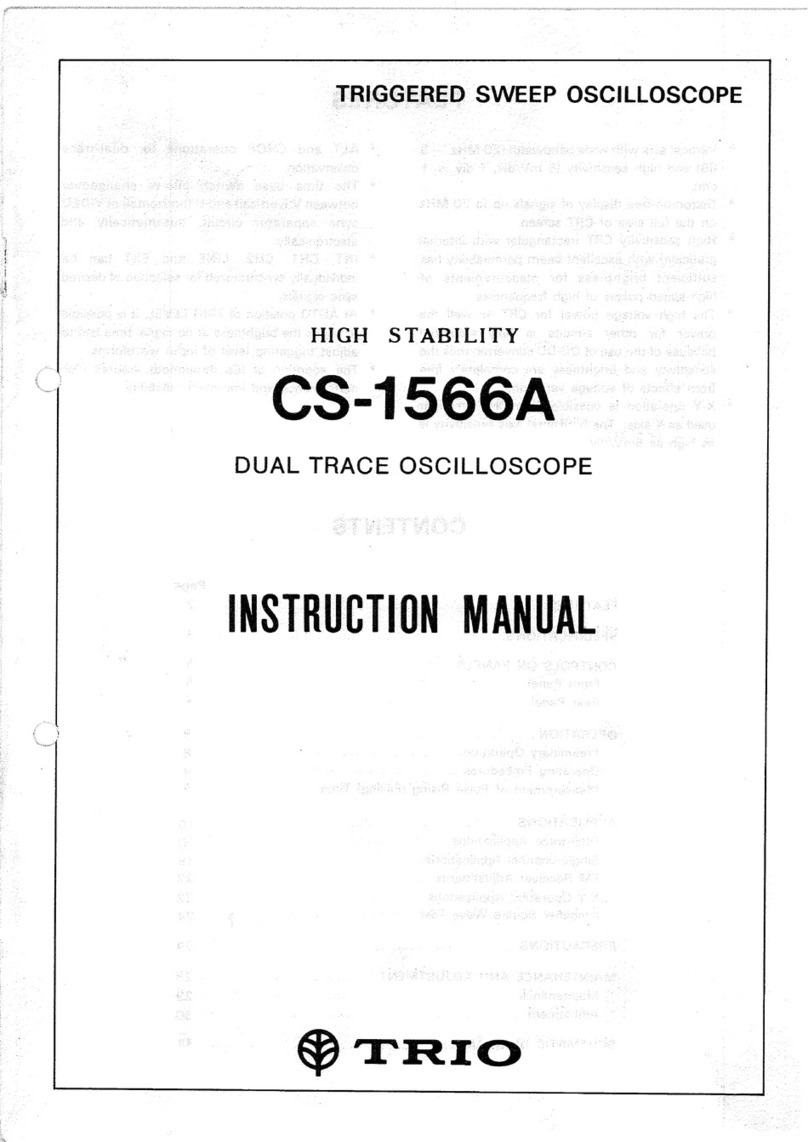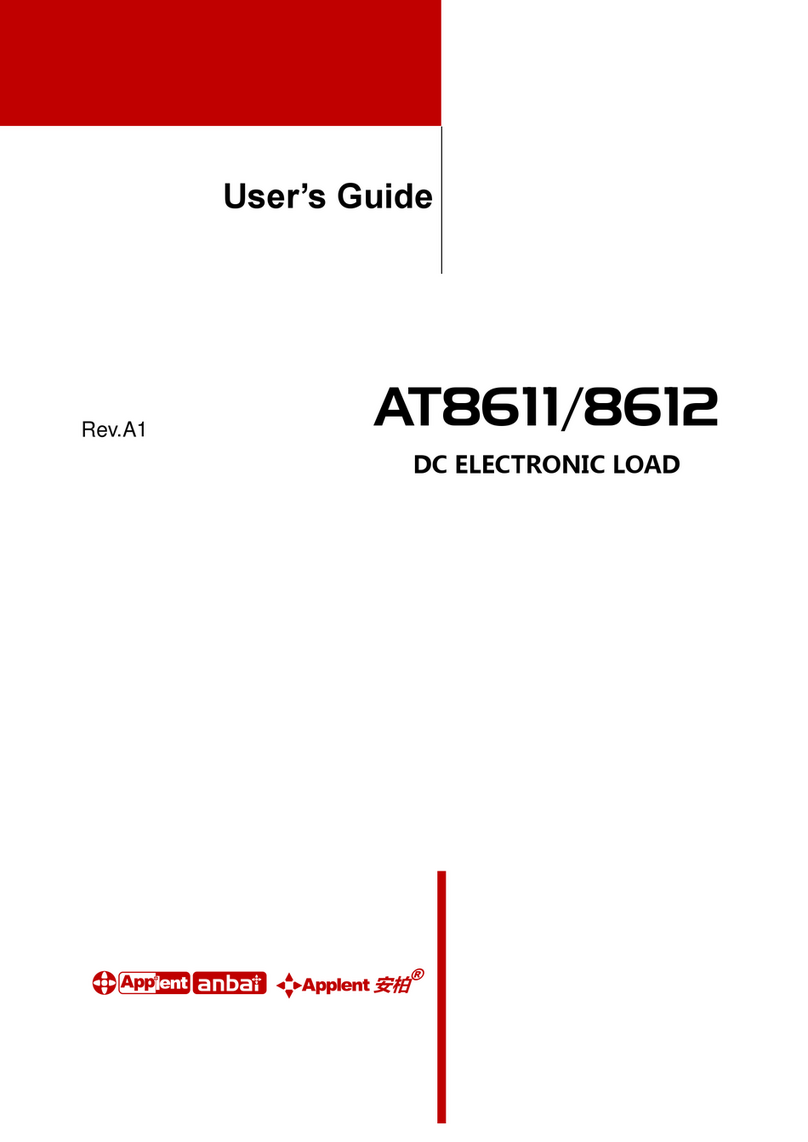TIS 851 User manual

VOLTAGE TESTER
INSTRUCTION MANUAL
TIS 851
VOLTAGE TESTER

2
1. FEATURES
•Self diagnostic test
•AC and DC voltage tests up to 690V for Europe with LED and LCD(TIS 851)
•Polarity indication
•High voltage indication
•Phase rotation test
•Continuity test
•Auto power ON/OFF
•Pen light for illuminating measurement points
•Probe clip for adjustable spacing between probes
•IP 64
•Compact design (Light weight and portable)
•Use thick wire H07RNF for Europe
2. Safety warning
This instruction manual contains warnings and safety rules which have to be noticed by the
user to ensure safe operation of the instrument and to maintain it in safe condition. Therefore,
read through these operating instructions before using the instrument.
WARNING is reserved for conditions and actions that are likely to cause serious or fatal injury.
CAUTION is reserved for conditions and actions that can cause injury or instrument damage.
It is essential that the above instructions are adhered. Failure to follow the above instruct-ions may cause
injury,instrument damage and /or damage to equipment under testing.
WARNING
•Aftert measuring AC/DC voltage source for 3 minutes, the tester must take a rest for 1 minute. Never make
measurements on a circuit in which the electrical potential exceeds 690V. (When the measured voltage
exceeds 690V, all the voltage display LEDS light up)
•Do not attempt to make measurement in the presence of flammable gasses, as the use of the instrument
may cause sparking, which could lead to an explosion.
•Never attempt to use the instrutment if its surface or your hands are wet. (Do not use in rainfall.)
•Keep your hands and fingers behind the barriers during measurements.
•Never unlock and open the Battery case during measurements.
•Verify proper operation on a known source before taking action as a result of the indication.
•Never attempt to make any measurement in any abnormal conditions, such as a broken case or exposed
metal parts are present on the instrument or test probes.
•Do not make any modification to the instru- ment.
•Extreme caution when Live circuit LED flashes or lights on.
•Correct indication of LEDs is only guaranteed within a temperature range of -10°C up to 55°C (<85% RH).

3
3. Instrument layout
○1 12/24/50/1 20/230/400/690V LEDs.for European voltage indication
○3L/R LEDs for phase rotation test
○4 Power LED
○5 Polarity indication LEDs for voltage
○6 LCD (only TIS 851)
○7 Continuity test /Live circuit LED
○8 Hight voltage indication > 50V, LED will light up
(1). L1 probe -
(2). L2 probe + (Instrument probe)
(3). Barrier
(4). Pen light
(5). Pen light switch
(6). Battery case
(7). Probe clip

4
4. Preparation for Measurement
4.1 Self-Proving Test
•Please touch the two probes together and press the torch button (5); all LEDs shall light up, except the
“POWER” LED.
•Please do the “Self-Proving Test” before and after the measurements, which proves the instrument’s LED
indication is function properly.
•All LEDs shall light up when battery is normal, except “POWER” LED.
•LEDs will flash or go off when the battery voltage is below 2.4±0.1V.
•Following the description of Clause 7 to replace the battery.
4.2 Trouble shooting
If any of the following problems occur, take off the “Battery Case” according to clause 7 in this
manual; then lock it back after 5 seconds. Do the Self-Proving Test again (Clause 4.1).
- Self-Proving Test cannot be performed before or after the measurement.
- The instrument doesn’t turn off automatically after the Self-Proving Test or the measurement.
5. Single handed use
With the L1 probe on the probe clip, the user can change the spacing between probes with one hand.
6. Measurement
WARNING
• Do not use the instrument when abnormal is found at Self-Proving Test.
• Instrument may turn on due to the influence of static charge.

5
1. Voltage test (Double-pole test)
►Connect both probes to the object under test.
►The voltage is indicated by LEDs and LCD(only TIS 851 ).
Live circuit LED lights up: ≥7V
►Voltage polarity is indicated in following manner.
NOTE
• When the L2 probe + is the positive (negative) potential, the Polarity indication LED indicates “+DC” (“-DC”).
2. High voltage indication
►Hold the instrument firmly and connect both probes to the object under test.
►Live circuit LED lights up when a voltage of approx. 50V AC or more exists in the object under test.(Pol> 50V
AC)
3. Phase rotation test
L LED and R LED for Phase roation test may operate on various wiring systems, but an effective testing result can
be obtained only on Three phase system.
►Hold the instrument firmly and connect both probes to the object under test. (hold method shown as below fig)
►Phase-to-phase voltage is indicated by each Voltage LED.
►R LED indicates that the field is rotating towards the right direction of the “probe -”. With this connection, the
motor will go positive rotation.
WARNING
•Carefully check Clause 2 as well.
•Self- proving test should be done prior to measurements and confirm LED and buzzer works properly.
•Before using a voltage detector with audible indicator at locations with a high background noise level, it has
determined whether the audible signal is perceptible.
•Verify proper operation on a known source before and after use.
•Keep your hand and fingers behind the barriers on the probes during measurements.

6
►L LED indicates that the field is rotating towards the left direction of the “probe -”.
With this connection, the motor will go negative rotation.
The principle of measurement
The instrument detects the phase rising order in relation to the user to EARTH.
NOTE
Function of this test may not be fully achieved if the insulation condition of the user or of the equipment under test is
not good enough.
6.4 Continuity test
The instrument operates as follows when measuring
continuity.
►LED RX/Ωshould be lighted,and the buzzer should sound continuously.
NOTE
In continuity mode the instrument works in the same way as the self-diagnostic test.
6.5 Pen light function
(Illuminating the Measurement Point)
Pen light illuminates the measurement point in dimly lit areas.
►Pressing the Pen light switch turns on the light.
NOTE
• The light is available while the instrument is powered off.
• Using the Pen light shortens the battery life.
7. Battery Replacement
Batteries are dead when Power LED flashes or goes off at Self-diagnostic test defined in point 4.1.Follow the
procedure below and replace batteries with new ones (type AAA 1 .5 x 2pcs).
►Unlock the Battery case with a coin-shaped object.
WARNING
Make sure the object under test isn’t live.
WARNING
•Remove the probes from any testing point when opening the Battery case.
•Please use new battery.
•Mark sure there is no damage on the battery skin before inserting it into the tester.

7
►Pull out the Battery case and replace the batteries.Insert new batteries according to the engraving on the Battery
case.
►Insert the Battery case into the instrument and firmly lock the case again.
8. Specification
Voltage test
Voltage range
12 ~ 690V AC/DC
LED (TIS 851)
Nominal voltage
Europe:
12/24/50/120/230/400/690V
Tolerance
(Threshold voltage)
Light on at more than
7±5V (12V LED)
18 ±5V (24V LED)
37.5±5V (50V LED)
75% ± 5% of nominal voltage
(120/230/400/690V LED)
Response time
<0.5s at 100% of each nominal voltage
LCD
Range resolution (auto-range)
7 ~ 690V/1V
Accuracy (23±5ºC)
±(3%+3) or 5V
Over range indication
All voltage LED light up
Response time
<1s at 90% of each voltage
Peak current is
3.5mA (at 690V)
Internal battery consumption
Approx. 33mA (battery 3V, measuring
690V AC)
High voltage indication
Voltage range
50 ~ 690V AC
Phase rotation test
System
Three-phase system / AC 50/60Hz
Phase range
120 ± 5 degrees
Continuity test
Detection range
0 ~ 550kΩ
Test current
Approx. 1.5µA (battery 3V, 0Ω)
WARNING
Confirm that the Battery case is properly locked prior to measurements.

8
9. Cleaning and Storage
CAUTION
•Use a lightly damp cloth with neutral detergent for cleaning the instrument. Do not use abrasives or solvents.
• Do not expose the instrument to direct sun, high temperature and humidity or dewfall.
• Put the Probe protection cover on the Tips while not in use. Otherwise it may cause an injury.
• Remove batteries when the instrument will not be in use for a long period.
• Do not install the Battery Case without batteries.
• Please operate this unit strictly according to the manual instruction.
10. Safety Symbol
Always check proper operation of the device on a known working circuit before
using.
Suitable for live working.
Caution! Risk of electric shock. Under normal use, hazardous voltages may be present.
Alternating current.
Both direct and alternating current.
11. Measurement Category
Category IV: is for measurements performed at the source of the low-voltage installation.
Category III: is for measurements performed in the building installation.
Category II: is for measurements performed on circuits directly connected to the low voltage installation
12.For Environment
-Do not dispose electrical appliances as unsorted municipal waste, use separate collection facilities.
-Contact your local government for information regarding the collection systems available.
-If electrical appliances are disposed of in landfills or dumps, hazardous substances can leak into the
ground water and get into the food chain, damaging your health and well-being.
-When replacing old appliances with new ones, the retailer is legally obligated to take back your old
appliance for disposal at least for free of charge.
Internal battery consumption
Approx. 30mA (battery 3V, 0Ω)
Reference condition
Battery
3V (AAA 1.5V x 2pcs)
Temperature
-10 ~ 55ºC Operation
-20 ~ 60ºC Storage
No condensation
Humidity
Max. 85% RH
Operating altitude
Altitude up to 2000m
Safety
Standard category
EN 61243-3/ IEC 61243-3
EN 61010-1/ IEC 61010-1
CATIII 690V /CAT IV 600V
Pollution degree
2
IP code
IP64

9
13. Ingress protection (IP) ratings
Ingress protection numbers are used to specify the environmental protection – electrical enclosure – of electrical
equipment.
The IP rating normally has two numbers:
1. The first number – protection against solid objects.
2. The second number – protection against liquids.
IP64:
The instrument is totally protected against dust and against water sprayed from all directions.
Table of contents
Other TIS Test Equipment manuals
